Changdeokgung Palace's back garden This is Korea's largest royal garden, adjacent to Changgyeonggung Palace, to the north of Changdeokgung Palace. It is also called by various names such as Gungwon, Geumwon, Bukwon, and Huwon. Recently, it is also called Biwon. Part of the reason is that it has been preserved privately for 25 years, which is why it has such a name.
Changdeokgung Palace Huwon is available for limited viewing only by reservation. In the case of online reservation system, it is actually not easy to make a reservation. Weekends are even more difficult.
Huwon viewing is not a free viewing, but a limited viewing that requires you to move along with a guide. Still, the guide service only observes the selectively controlled viewing flow, and there is no inconvenience in viewing. It would have been better if I could have seen it during the peak of autumn leaves, but the back garden was beautiful, and after seeing it, I can understand why the kings liked Changdeokgung Palace more than Gyeongbokgung Palace.

There is a separate ticket office near Hamyangmun Gate, where you can enter Changgyeonggung Palace after visiting the entire palace. You can refer to the previous article about Changgyeonggung Palace.
You can buy a ticket to visit Changgyeonggung Palace at the ticket office in front of Hamyangmun Gate or purchase an on-site ticket for a Huwon tour. The reason why the Changgyeonggung and Changdeokgung courses are usually recommended is because the two palaces are so close together. However, if you are sponsored to watch it, it may be a little physically difficult to see it all in one day. After visiting Changdeokgung Palace and visiting the sponsorship, I took 10,000 steps.
This is a restricted viewing area that you must move along with the commentary I mentioned earlier. Only 100 people per 30-minute session are allowed to enter.
The autumn leaves were still in full bloom at the entrance to the rear garden. The area at the entrance of this sponsorship is the area where the leaves change color the last, so even at the end of November, the leaves were in full bloom.
And I finally saw the Buyongji of rumors. The unique style of Buyongjeong Pavilion and Juhamnu Pavilion were reflected in the pond and it was a superb view.
Buyongjeong, located to the south of Juhamru, was built in 1707 in the backyard of Changdeokgung Palace during the reign of King Sukjong, and it is said that the name at that time was Taeksujae. In 1792, during the reign of King Jeongjo, the name was changed to Buyongjeong.
King Jeongjo, who used Buyongji the most, supervised a poetry writing test for officials at Buyongjeong. He exiled the official who failed to compose a poem on time to a small island in the middle of Buyongji and burst into laughter. There is an interesting record that a piece of boat was floated on Buyongji and the exiled servant had to row the boat to the island.
Juhamnu was used as a library for the royal family and was relatively open to the public. Juhamnu is a two-story pavilion built in 1776 when King Jeongjo ascended the throne. The second floor is Juhamru and the lower floor is Gyujanggak. The main gate leading to Juhamru was called Eosumun. The fish gate in the center was a passage for the king, and his servants had to bow down through the small gates on either side.
There is also a building called Younghwadang, and it is said that the king took the entrance exam here. Yeonghwadang faces Changgyeonggung Palace’s Chundangdae yard to the east and Buyongji Pond to the west.
Passing Buyongji Pond, you will see a unique stone gate called Bulromun, which was carved entirely out of stone. It has the meaning of a door that never ages, and it is said that there are traces of a wooden hinged door on the pillar of the door.
If you pass through this gate, you will enter the area where Aeryeonji, Aeryeonjeong, and Uiduhap are located.
Aeryeonji is also a very beautiful pond. It is said that in 1692, during the reign of King Sukjong, an island was built in the middle of the pond and a pavilion was built on it. Currently, the island does not exist and the pavilion spans the northern end of the pond. King Sukjong, who loved lotus flowers, named the pavilion Aeryeon, and the pond became Aeryeonji.
Yeongyeongdang was built in 1828 for Crown Prince Hyomyeong to honor his father, Sunjo. Modeled after a nobleman's house, it was built around the king's sarangchae and the queen's anchae, and was not decorated with dancheong. The size of ordinary private houses was limited to 99 rooms, but Yeongyeongdang was built with about 120 rooms. Pulley-type awnings are installed on the roof covered with bricks and copper plates in the style of the Qing Dynasty, giving it an exotic feel. After King Gojong, Yeongyeongdang was used as a place to receive foreign ministers and hold banquets.
The hanoks in the form of noblemen's houses are so beautiful that you can feel a different elegance from Nakseonjae.
Seonhyangjae, the study room of Yeongyeongdang, is believed to have been built during the reign of King Gojong, and means "a house with a good scent." It is a unique building with a canopy roof covered with Qing Dynasty bricks and bronze, and a pulley-shaped canopy. This awning was installed to avoid direct sunlight in the afternoon as the building faces west.
After leaving Yeongyeongdang, the next course is a pond in the shape of the Korean Peninsula with a pavilion.
This viewing pavilion is a fan-shaped pavilion and is believed to have been built at least before 1901.
The next course after the viewing pavilion is the whole area of Ongnyucheon.
The stream flowing in the deep valley north of the Huwon of Changdeokgung Palace is called Okryucheon. It is said that in the 14th year of King Injo (1636), a U-shaped groove was dug on Soyoam, a wide rock, and water circulated. It is a description that reminds me of the paving stone of Gyeongju.
The only remaining thatched-roof building in the palace, Changuijeong, is located here. The area around the pavilion is made up of rice fields, and judging from its size, it seems that the king used it for a farming performance with the mindset of serving the people.
Looking back at the courses in Huwon, I feel like I know why the kings liked Changdeokgung Palace more than Gyeongbokgung Palace. I think that the beautiful appearance of Huwon in harmony with nature would have been a greater healing than Gyeongbokgung Palace, which was only stiff.
A residential area can be seen along the palace wall of Changdeokgung Palace Huwon.
I also felt the strange feeling that the past and the present coexist across the fence.
The official last course is around Seonwonjeon, a space for ancestral rites with juniper trees, a natural monument. This juniper tree is estimated to be 750 years old.
If you haven't visited Changdeokgung Palace yet, I think it's worth it even if you make a reservation at least once. It is expected to be even more beautiful when the leaves are in full bloom in spring or autumn. At the end of November when I visited, it was too late autumn, close to early winter, so many places had lost their leaves, but Changdeokgung Palace was still very beautiful.






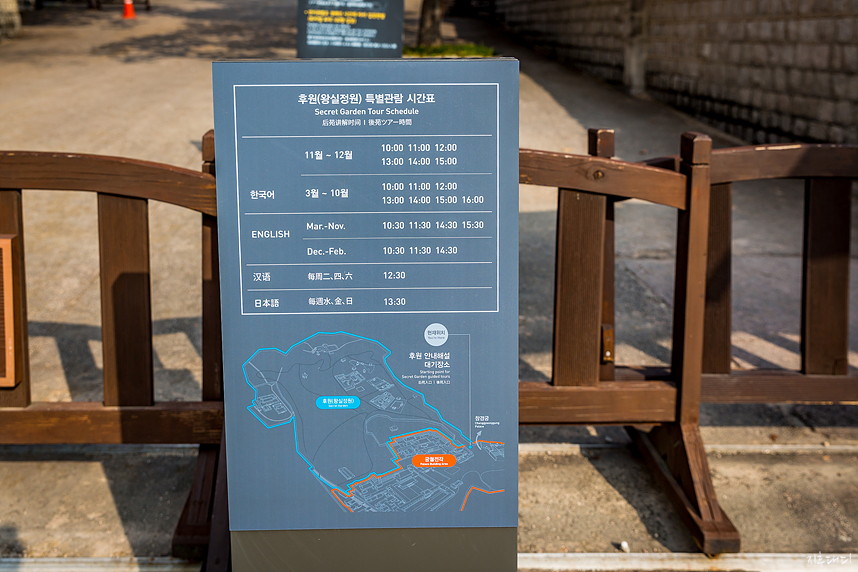


















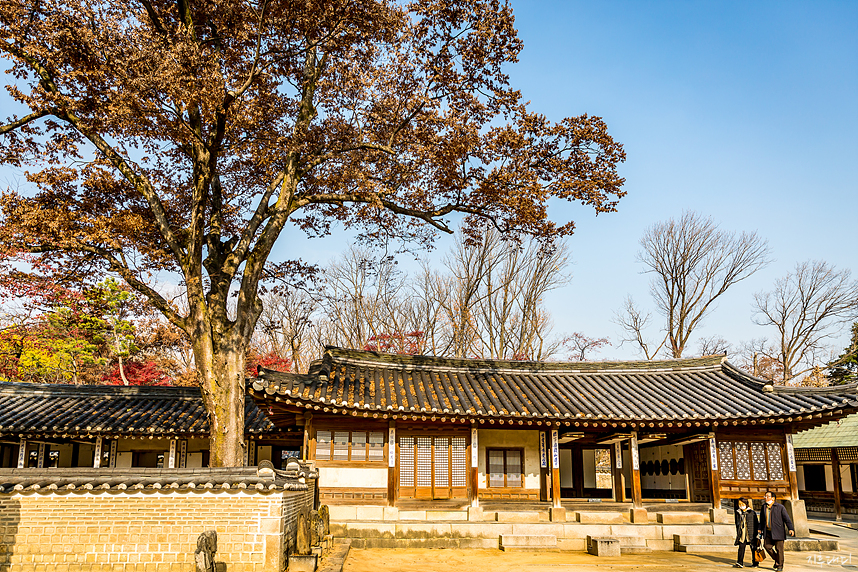

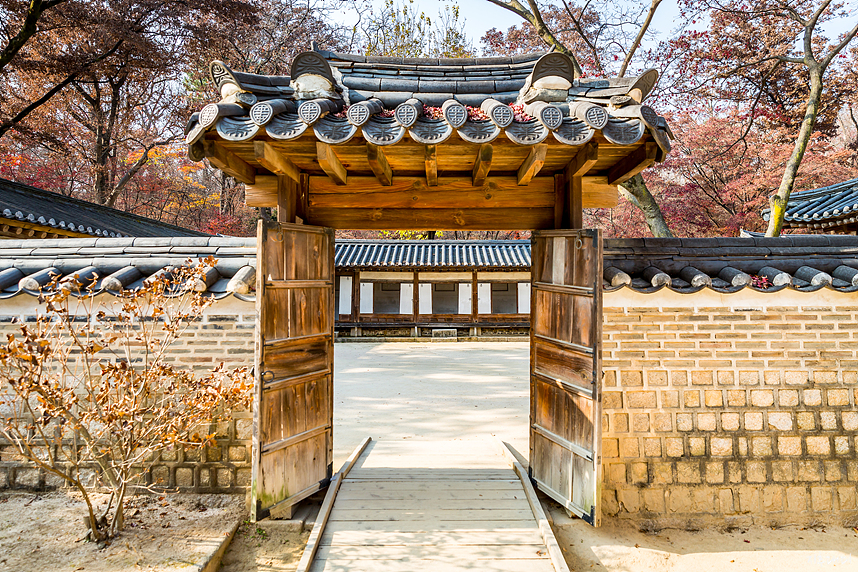















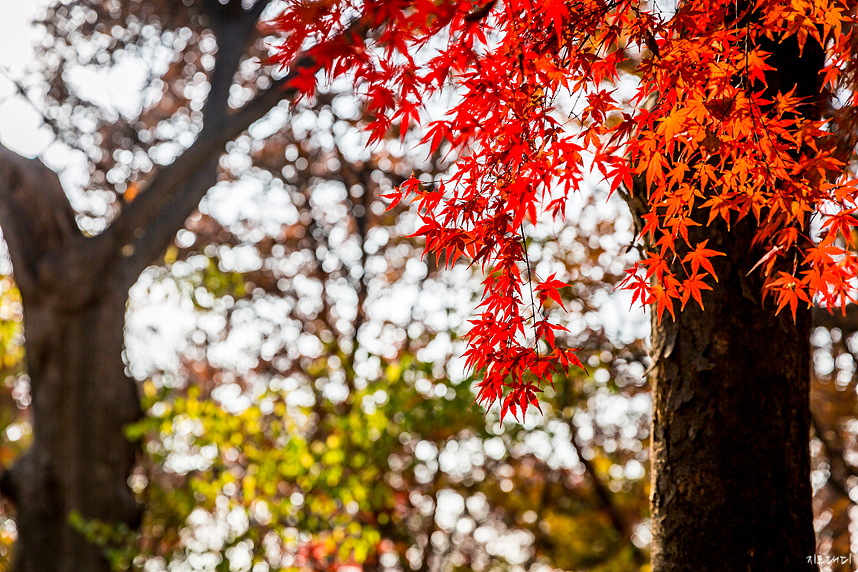




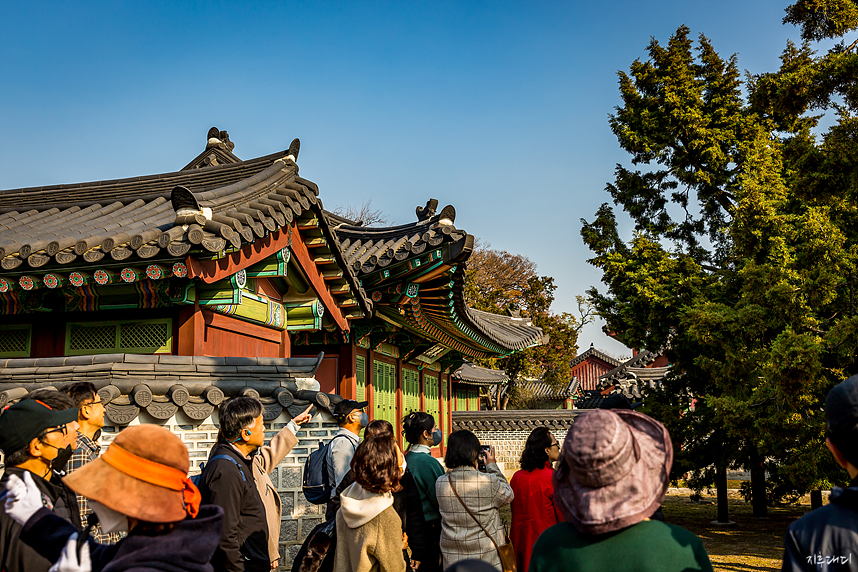
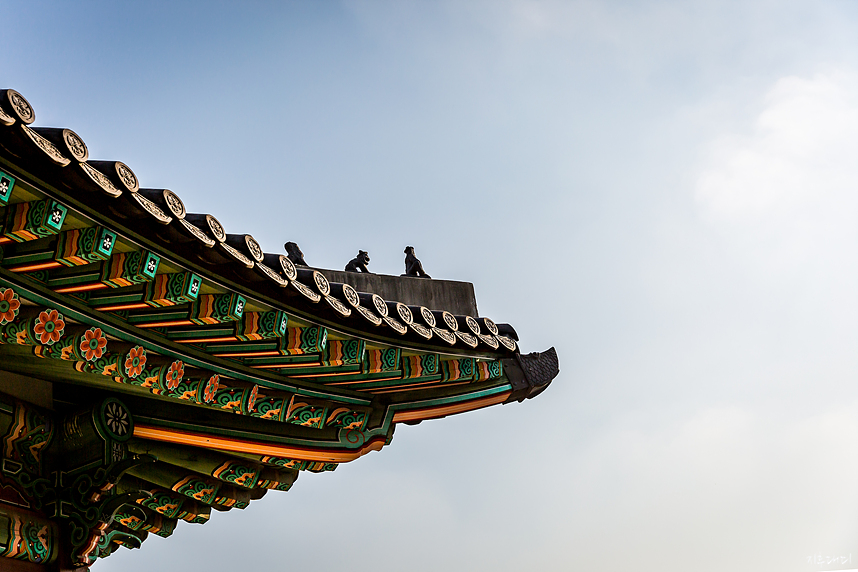
Comments
Post a Comment